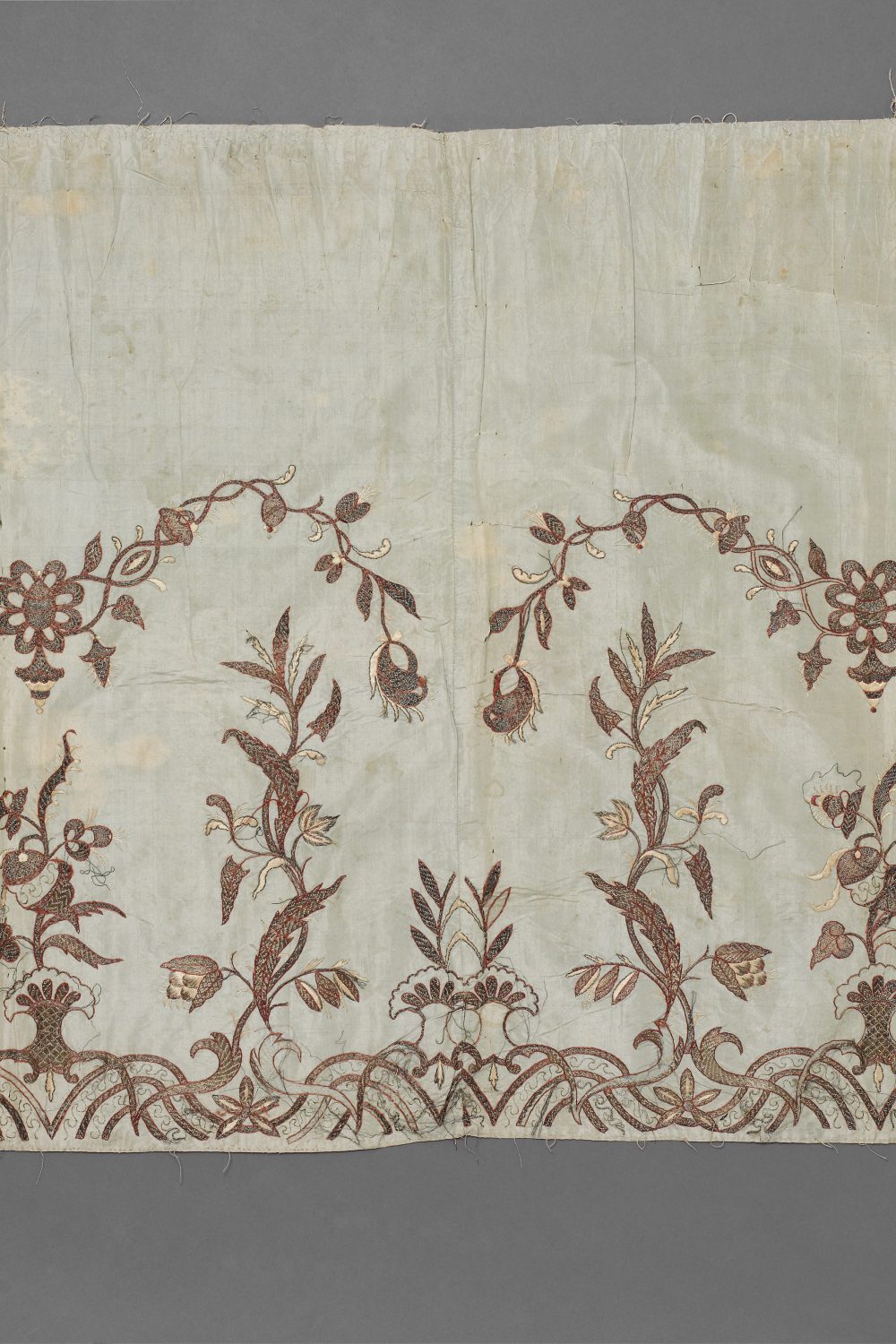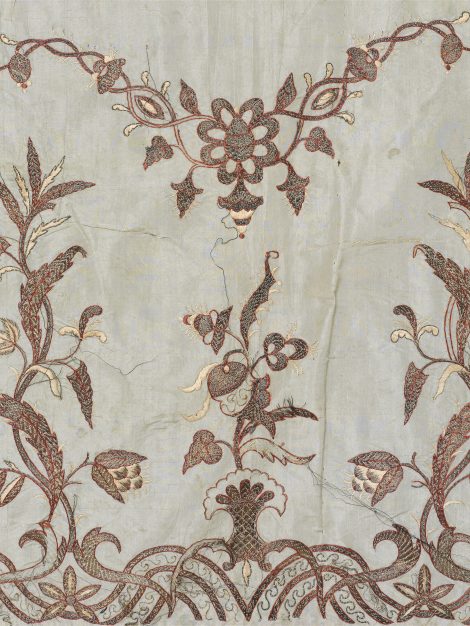This panel may have been part of the petticoat of a mantua, the most formal type of women’s gowns that were essential wear for attendance at the Royal Court in the 18th Century. Supported by the obligatory broad side hoops, these petticoats provided an ideal expanse for a large area of expensive embroidery, signifying the wealth and prestige of the wearer as well as providing visual spectacle. The symmetrical design of the panel, rococo in its meandering lines, has been embroidered in silk and metallic threads. Pinkish-brown silk was used mainly for outlining, cream for more solid elements of the motifs. The greater part of the design has been executed in once brilliant silver thread wound round a silk core (apparent where it has come away and unwound). As a costly material it was limited to the upper side of the fabric, laid down and anchored with couching stitches that themselves were positioned to create patterns. Great care was taken by the embroiderer not to tarnish the metal by too much handling. Many threads have come away from the silk to the sides and the base of the panel revealing the drawn design now corroded in places where the silver thread once lay above it. The Victoria and Albert Museum owns a magnificent example of a mantua and petticoat, dated to 1740-45, even more splendidly embroidered in silver threads. This embroidery is documented as the work of a professional, although gifted amateurs such as the well-connected Mary Delany were known to embroider their own court petticoats to a very high standard.
Panel
Mid 18th Century
Silk embroidered with silk and metallic threads

